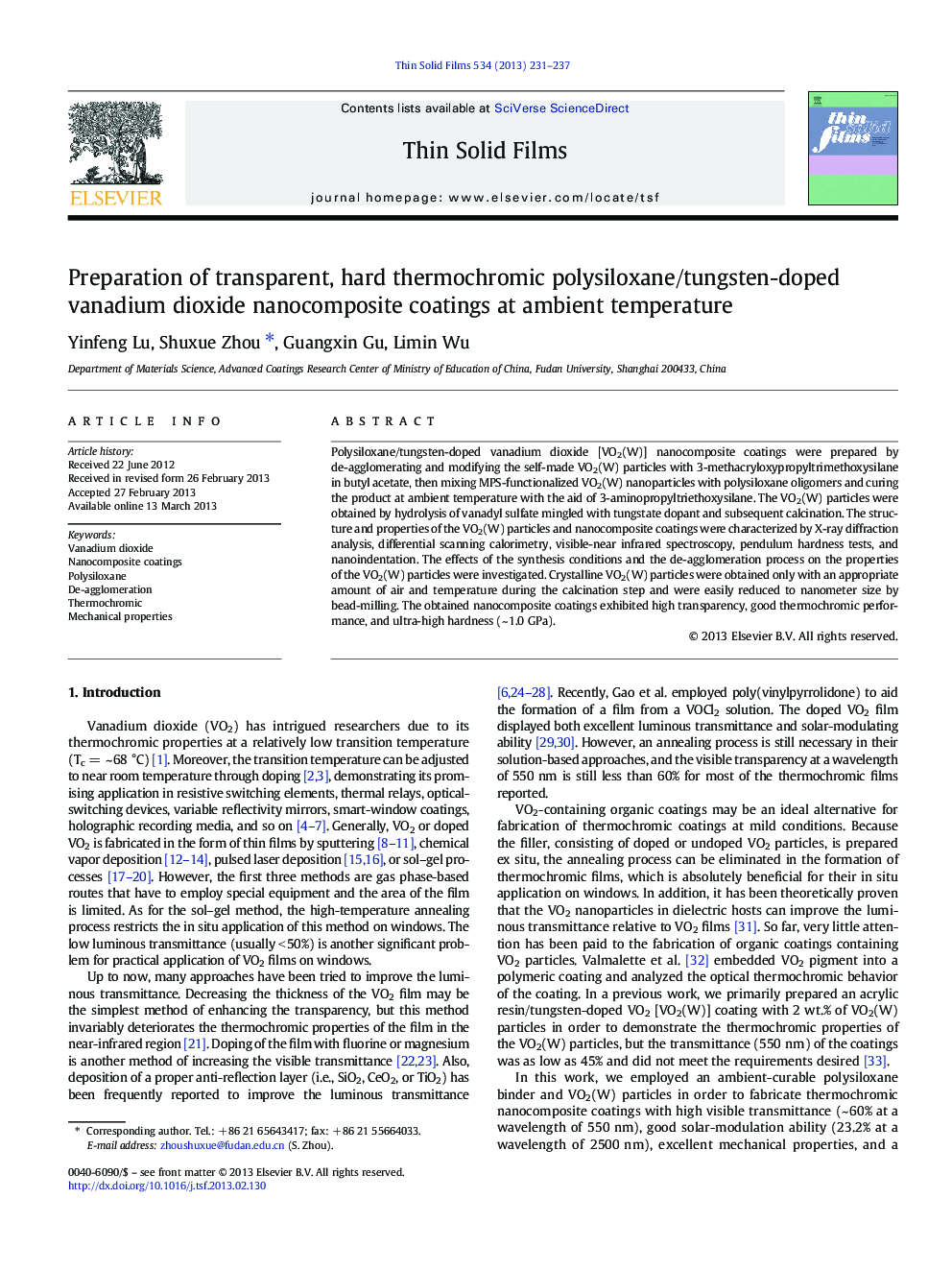| Article ID | Journal | Published Year | Pages | File Type |
|---|---|---|---|---|
| 1666274 | Thin Solid Films | 2013 | 7 Pages |
Polysiloxane/tungsten-doped vanadium dioxide [VO2(W)] nanocomposite coatings were prepared by de-agglomerating and modifying the self-made VO2(W) particles with 3-methacryloxypropyltrimethoxysilane in butyl acetate, then mixing MPS-functionalized VO2(W) nanoparticles with polysiloxane oligomers and curing the product at ambient temperature with the aid of 3-aminopropyltriethoxysilane. The VO2(W) particles were obtained by hydrolysis of vanadyl sulfate mingled with tungstate dopant and subsequent calcination. The structure and properties of the VO2(W) particles and nanocomposite coatings were characterized by X-ray diffraction analysis, differential scanning calorimetry, visible-near infrared spectroscopy, pendulum hardness tests, and nanoindentation. The effects of the synthesis conditions and the de-agglomeration process on the properties of the VO2(W) particles were investigated. Crystalline VO2(W) particles were obtained only with an appropriate amount of air and temperature during the calcination step and were easily reduced to nanometer size by bead-milling. The obtained nanocomposite coatings exhibited high transparency, good thermochromic performance, and ultra-high hardness (~ 1.0 GPa).
•Thermochromic coatings were prepared with VO2(W) particles and polysiloxane.•Crystalline VO2(W) particles can be reduced to nanosize by bead-milling.•The coatings display transparency of 60% and solar energy moduluation of 23%.•The coatings are ambient-curable, favoring in situ application on windows.
